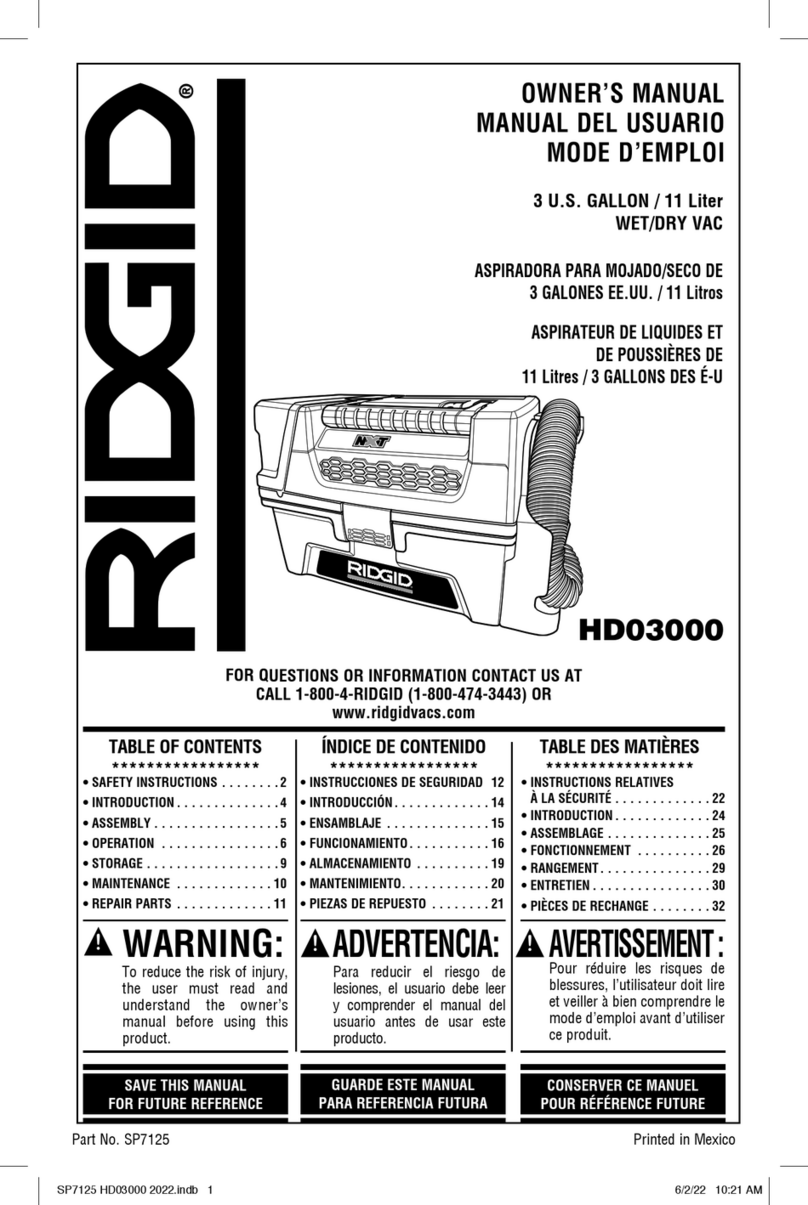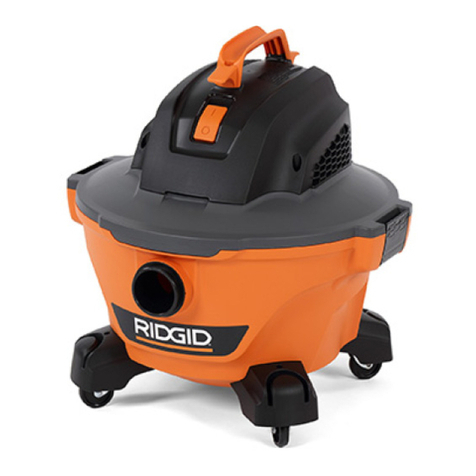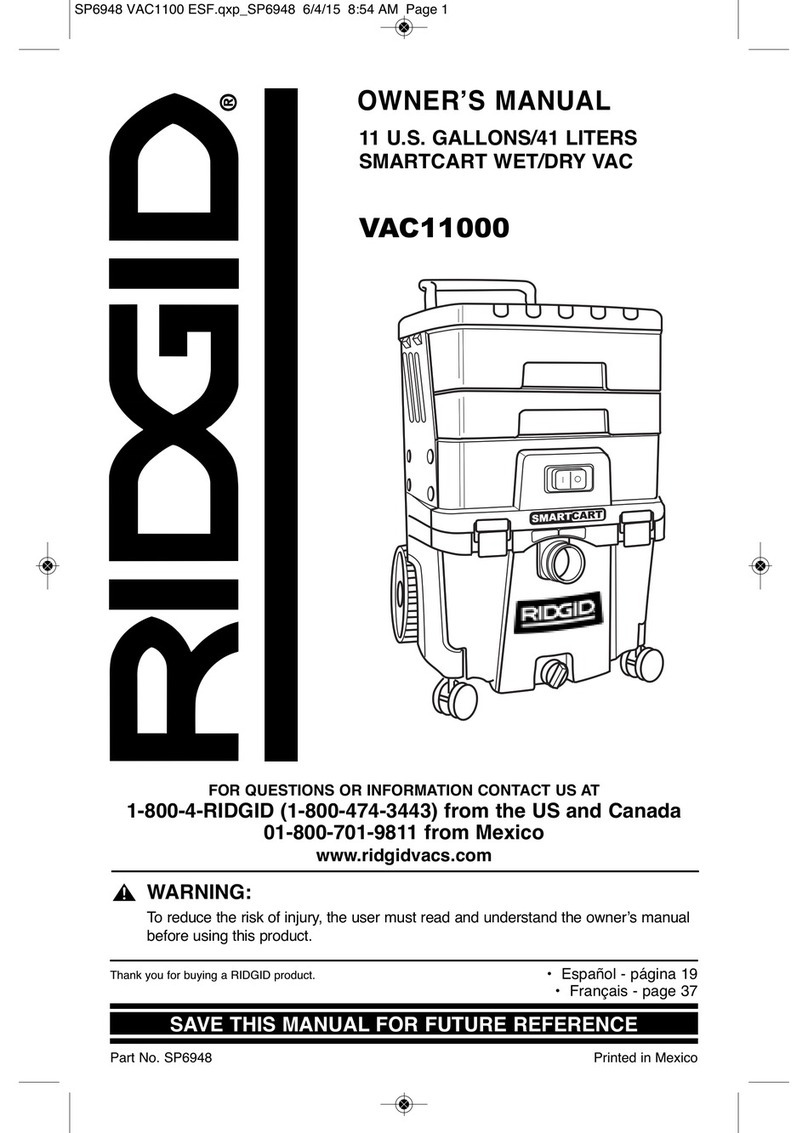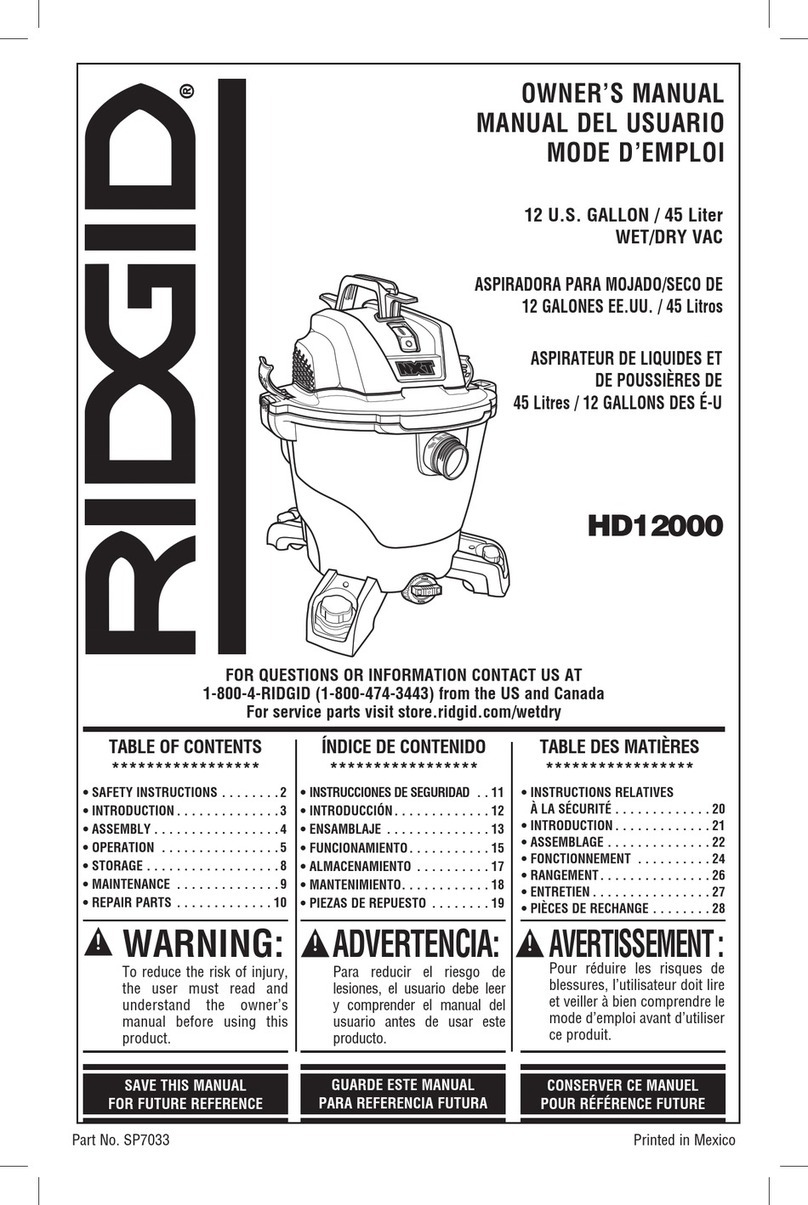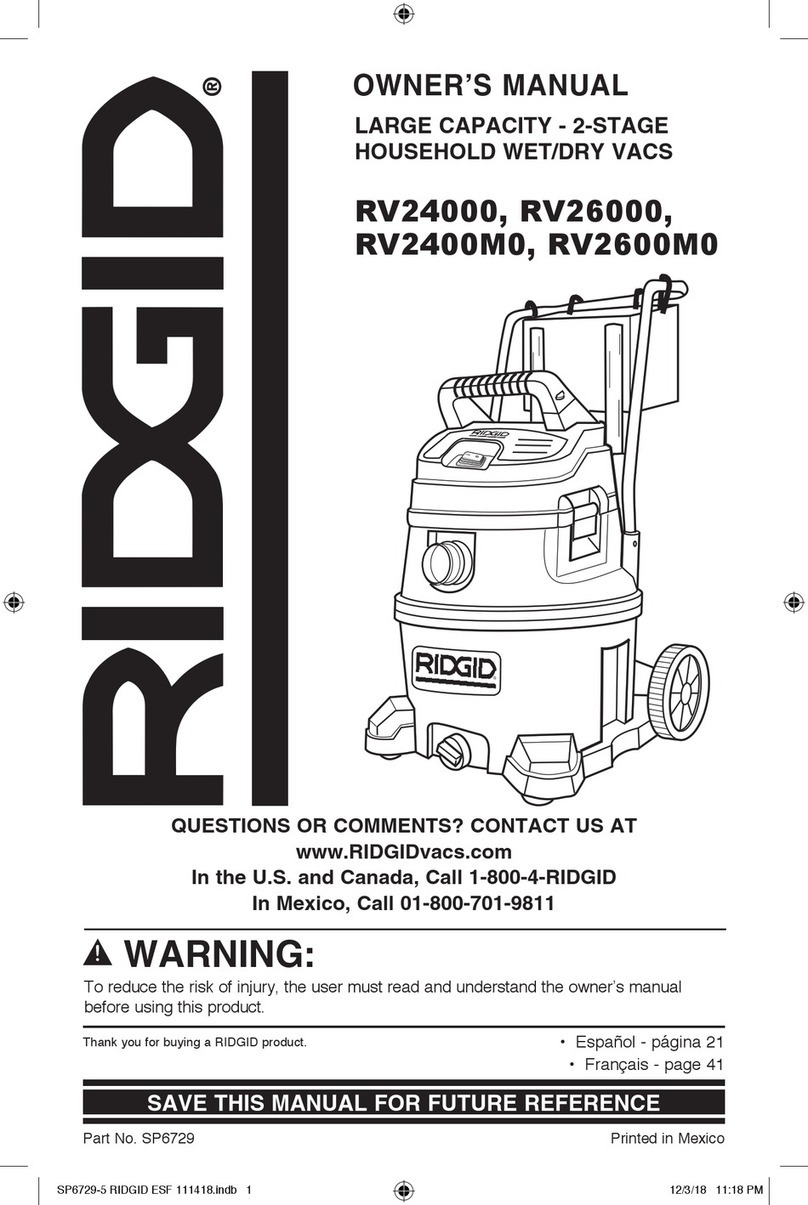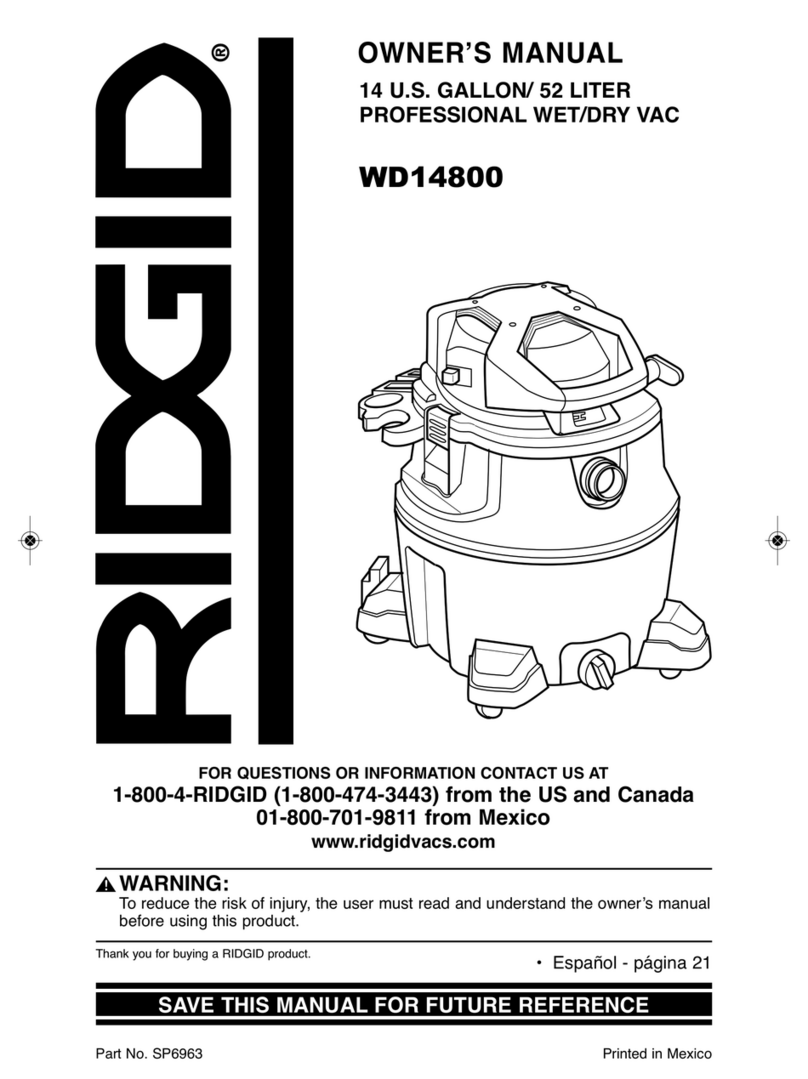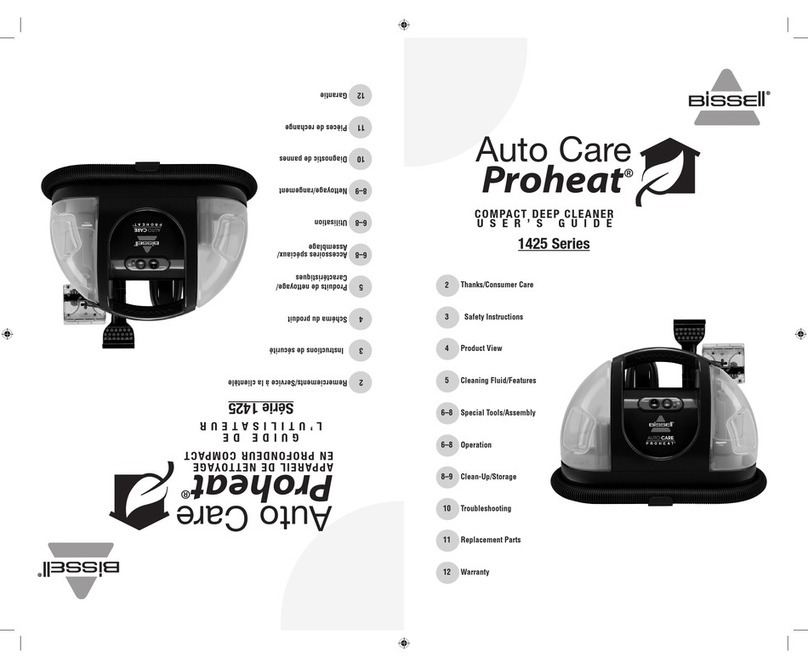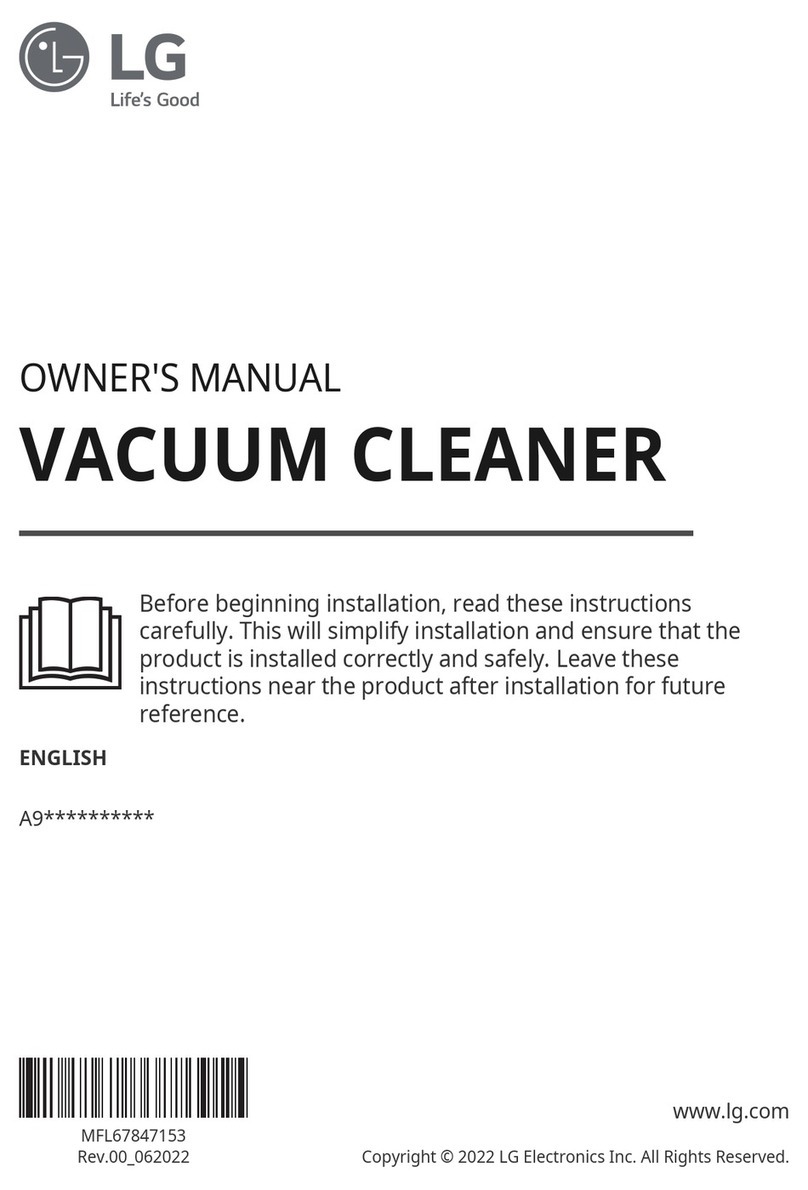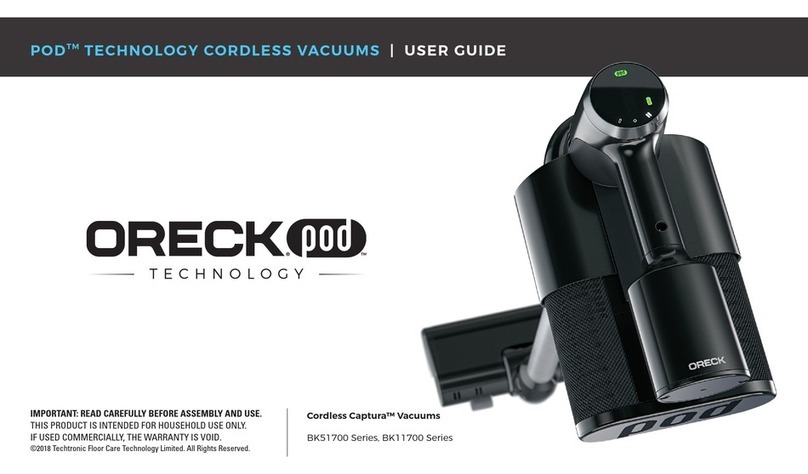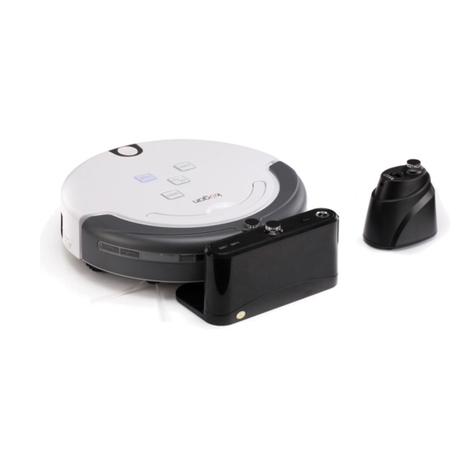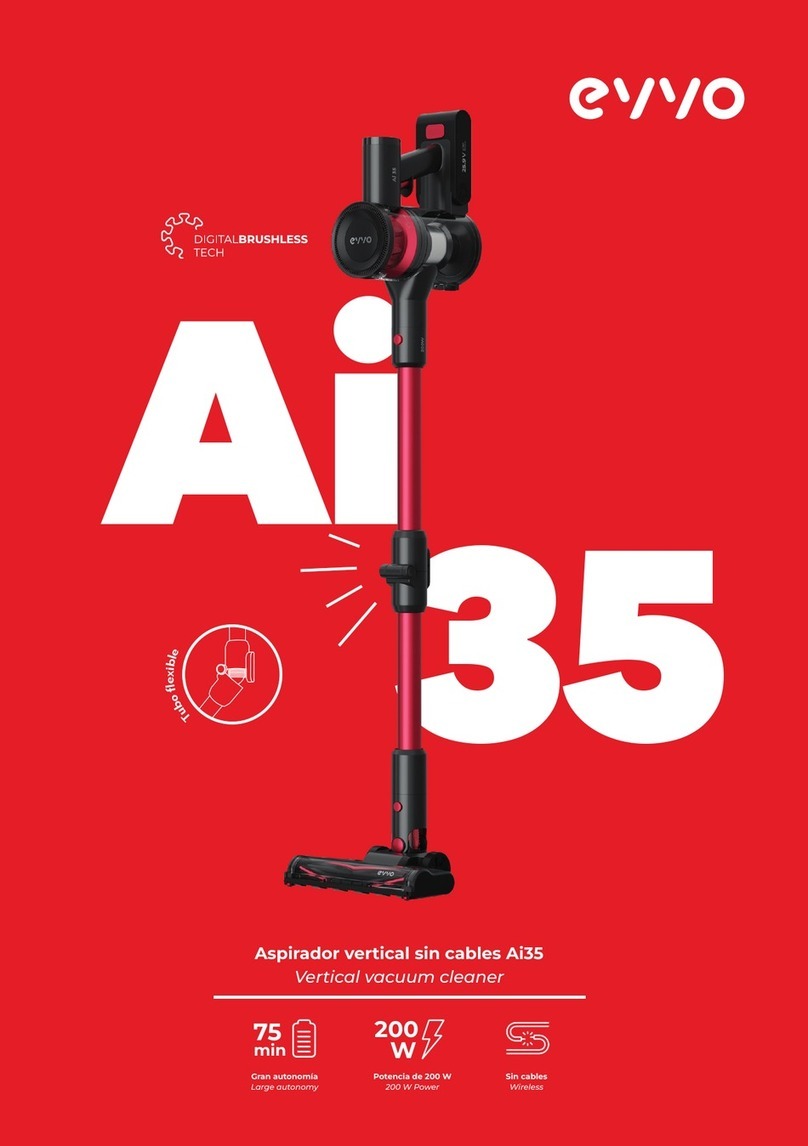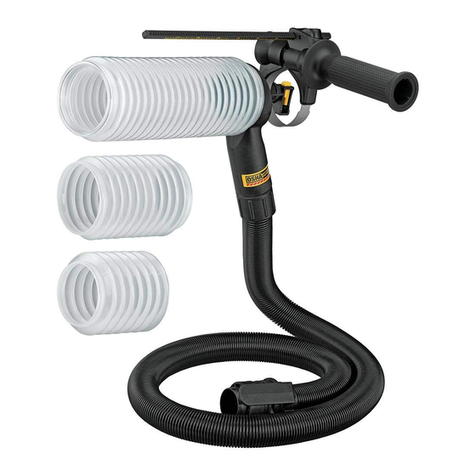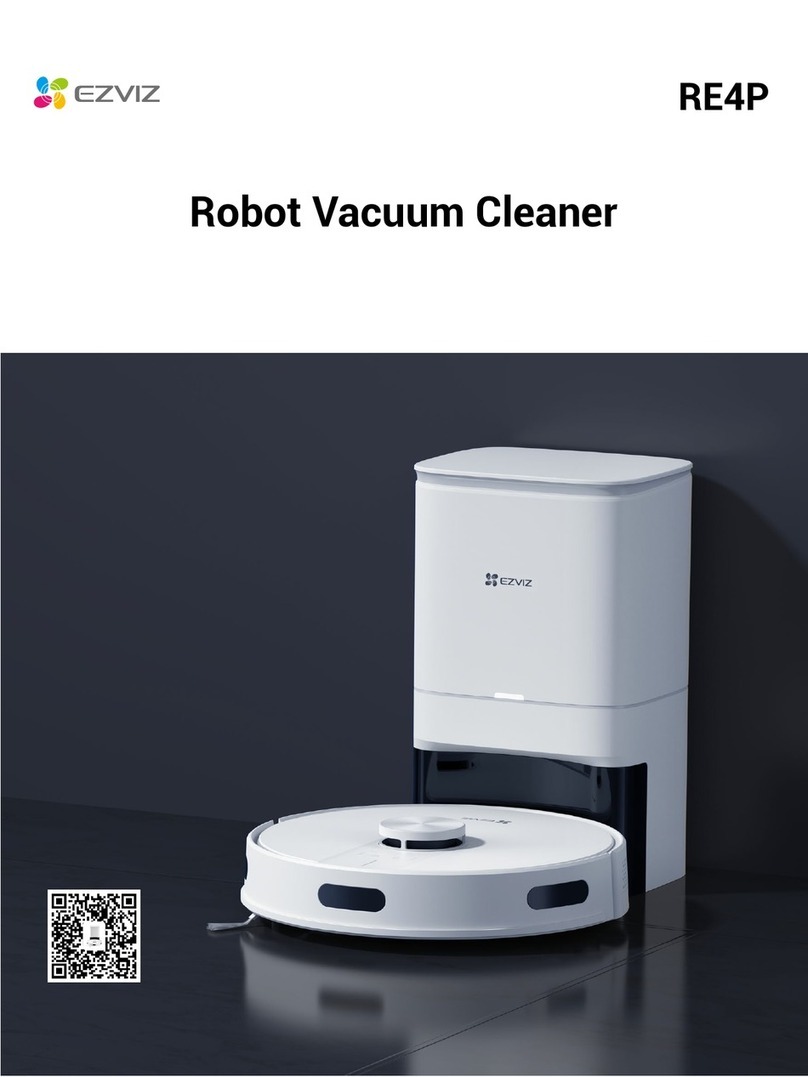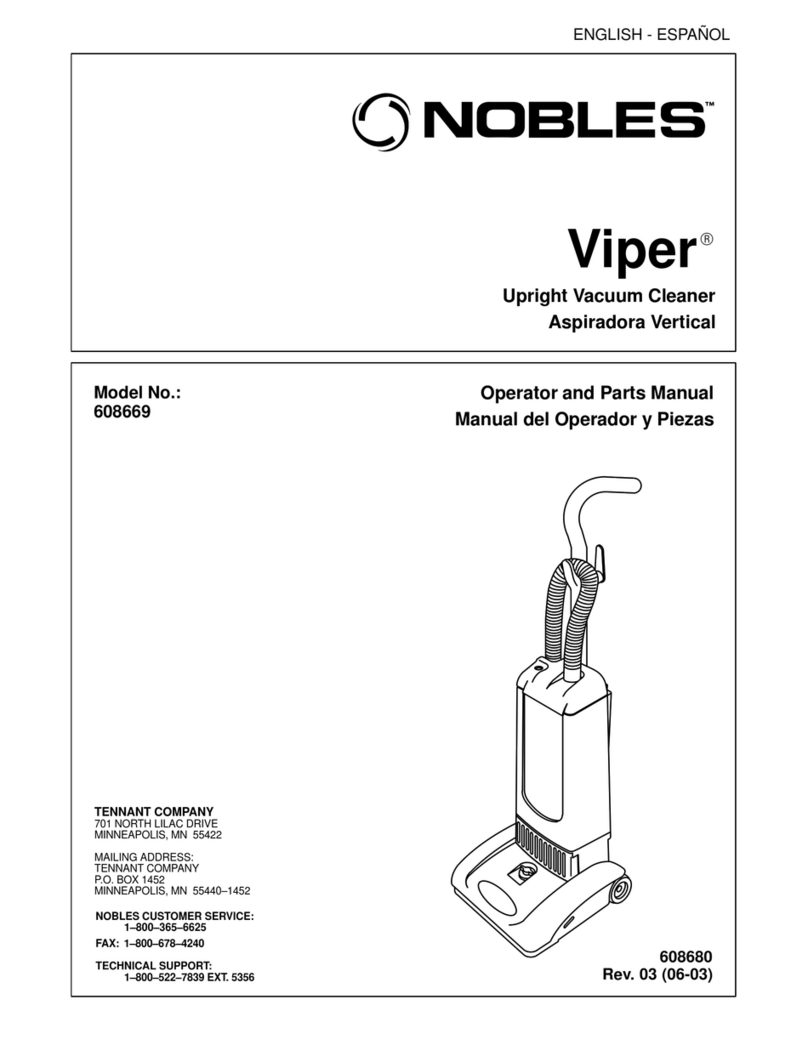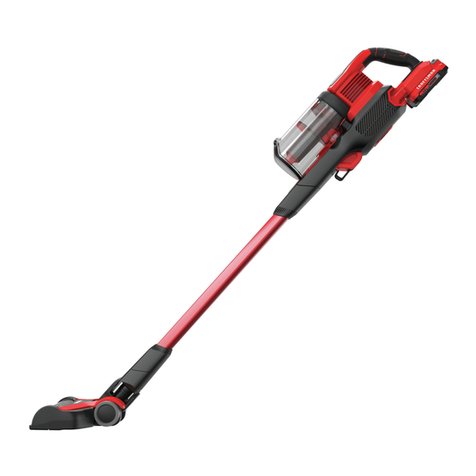Safety is a combination of common sense,
staying alert, and knowing how your
wet/dry vacuum cleaner (“Vac”) works.
Safety Signal Words
DANGER: Indicates an imminently
hazardous situation which, if not avoided,
will result in death or serious injury.
WARNING: Indicates a potentially
hazardous situation which, if not avoided,
could result in death or serious injury.
CAUTION: Indicates a potentially
hazardous situation which, if not avoided,
may result in minor or moderate injury, or
property damage.
When using your Vac, always follow basic
safety precautions including the following:
WARNING - To
reduce the risk of fire, electric shock,
or injury:
• Read and understand this operator’s
manual and all labels on the Wet/Dry
Vac before operating.
• Use only as described in this manual.
• Do not leave Vac running while
unattended.
• Sparks inside the motor can ignite
flammable vapors or dust. To reduce
the risk of fire or explosion, do not
vacuum or use near flammable or
combustible liquids, gases, or
explosive dusts, such as gasoline or
other fuels, lighter fluid, cleaners, oil-
based paints, natural gas, hydrogen,
coal dust, magnesium dust, aluminum
dust, grain dust, or gun powder. 2
Table of Contents
Section Page
Important Safety Instructions . . . . . . . . . . . . . 2
Introduction . . . . . . . . . . . . . . . . . . . . . . . . . . 4
Unpacking and Checking
Carton Contents . . . . . . . . . . . . . . . . . . . . . 4
Removing/Installing The Metal Handle . . . . . 6
Installing Handle . . . . . . . . . . . . . . . . . . . . . 6
Lowering Handle for Storage . . . . . . . . . . . 6
Removing Handle . . . . . . . . . . . . . . . . . . . . 6
Installing Tool Holder . . . . . . . . . . . . . . . . . 6
Replacement Filter Assembly . . . . . . . . . . . . 7
Drum/Caddy Assembly . . . . . . . . . . . . . . . . . 8
Wet/Dry Vac Assembly. . . . . . . . . . . . . . . . . . 9
Insert Hose . . . . . . . . . . . . . . . . . . . . . . . . . 9
Operation . . . . . . . . . . . . . . . . . . . . . . . . . . . 10
Vacuuming Dry Materials . . . . . . . . . . . . . 10
Section Page
Vacuuming Liquids . . . . . . . . . . . . . . . . . . 11
Emptying the Drum . . . . . . . . . . . . . . . . . . 11
Moving the Wet/Dry Vac . . . . . . . . . . . . . . 11
Blowing Feature . . . . . . . . . . . . . . . . . . . . 11
Accessory and Hose Storage . . . . . . . . . . . 12
Cord Wrap . . . . . . . . . . . . . . . . . . . . . . . . 13
Maintenance . . . . . . . . . . . . . . . . . . . . . . . . 13
Filter . . . . . . . . . . . . . . . . . . . . . . . . . . . . . 13
Cleaning & Disinfecting the Wet/Dry Vac . 14
Storage . . . . . . . . . . . . . . . . . . . . . . . . . . . 14
Casters & Wheels. . . . . . . . . . . . . . . . . . . 14
Frame & Handles . . . . . . . . . . . . . . . . . . . 14
Filter Replacement. . . . . . . . . . . . . . . . . . . . 15
Repair Parts . . . . . . . . . . . . . . . . . . . . . . . . . 16
Warranty. . . . . . . . . . . . . . . . . . . . . . . . . . . . 20
IMPORTANT SAFETY INSTRUCTIONS
!
!
!
!
• Do not vacuum anything that is burning
or smoking, such as cigarettes,
matches, or hot ashes.
• Do not vacuum drywall dust or cold
fireplace soot or ash with standard
filter. This is a very fine dust which may
be exhausted back into the air. Use a
fine dust filter instead.
• To reduce the risk of health hazards
from vapors or dust, do not vacuum
toxic materials.
• Do not use or store near hazardous
materials.
• To reduce the risk of electric shock, do
not expose to rain or allow liquid to
enter motor compartment. Store
indoors.
• Do not allow to be used as a toy. Close
attention is necessary when used by or
near children.
• Do not use with a torn filter or without
the filter installed except when
vacuuming liquids as described in the
Operation section of this manual. Dry
debris ingested by the impeller may
damage the motor or be exhausted
back into the air.
•WARNING: The power cord on this
product contains lead, a chemical
known in the State of California to cause
birth defects or other reproductive harm.
Wash hands after handling.
• Do not leave Vac when plugged in.
Unplug from outlet when not in use and
before servicing.
• Turn off Vac before unplugging.

